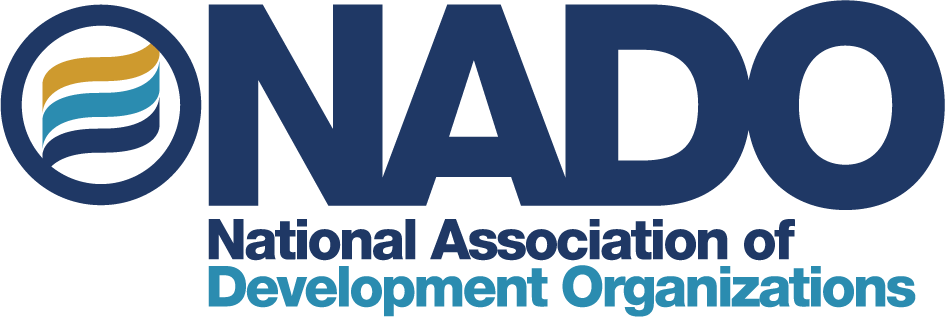Florida Regional Councils Association (FRCA)
In 2011, Florida’s regional planning councils (RPCs), in their role as EDA-designated economic development districts, came together to take a systematic look at the State’s energy infrastructure, supply, and overall resilience to disruptions and economic fluctuations. The BP Deepwater Horizon oil spill, which spilled millions of gallons of crude oil into the Gulf of Mexico, was a major impetus for action on energy assurance within the state. However, given Florida’s heightened exposure to natural disasters such as hurricanes, heavy rain events, tornadoes, major wild fires, and droughts, regional leaders were also responding to the growing risk of economic losses caused by such disruptions and the potential for new jobs and economic growth by supporting system redundancy, the hardening of infrastructure, and diversification of energy sources.

With support from a wide variety of state and federal agencies, the Florida Regional Planning Councils Association (FRCA) – which is an organization of the state’s 11 RPCs – undertook an Energy Assurance Study to evaluate the potential economic impacts of different future energy scenarios and gather input from residents and businesses throughout the state on their willingness to support different behavioral changes and policy solutions. These results ultimately informed the Florida Energy Resiliency Report, which provides 27 different strategies to improve Florida’s energy resilience. These strategies range from outreach and education activities that can be easily spearheaded by the RPCs to financing and implementation tactics such as Property Assessed Clean Energy (PACE) programs and the use of power purchase agreements to support distributed energy generation.
RPCs throughout the state are now evaluating how they can incorporate the findings and recommendations from these reports into their ongoing work. According to Luis Nieves-Ruiz, economic development program manager with the East Central Florida Regional Planning Council (ECFRPC), the Energy Assurance Study and resulting Energy Resilience Report have been a critical component of their regional planning efforts. In fact, ECFRPC is currently working to adopt some of the report’s recommendations into their comprehensive economic development strategy (CEDS). ECFRPC has also partnered with the Treasure Coast RPC and Energy Florida to apply for Innovation Manufacturing Communities Partnership (IMCP) designation to further the development of a turbine technologies industry cluster.

In the Central Florida Regional Planning Council’s region, the analysis and strategies included in the study and report have played a critical role in the development of their long-term plan for development. In 2011 the Central Florida Regional Planning Council (CFRPC) was awarded $2.4 million from the U.S. Department of Housing and Urban Development to prepare a sustainable regional development plan titled, Heartland 2060: Building a Resilient Region. During the visioning process, energy emerged as a critical element for supporting population growth, creating new economic opportunities, and building overall resilience throughout the 7-county region. During the 3-year Heartland project, CFRPC and their consortium of partners developed an energy baseline and greenhouse gas inventory for the region. Aligning with the mission of FRCA’s previous efforts, this information has supported new scenario planning efforts and has elevated energy diversification as a way to lessen the risks posed by future shocks.
The Tampa Bay Regional Planning Commission (TBRPC) has also been actively working to enhance their resilience through the One Bay Resilient Communities Working Group. Although the group focuses on a range of coastal and community resilience initiatives, energy is a large component of their ongoing work. In fact, TBRPC has partnered with the Southwest Florida Regional Planning Commission to create Solar Ready Florida, a collaborative effort to improve and expand the solar market throughout both regions. Seen as an advantage for both energy resilience and economic development within the region, TBRPC hopes to serve as a leading example for the rest of the Sunshine State.
Key Strategies for Success:
Work together and take advantage of the power of numbers – these efforts would never have gained the momentum, positive support, or funding that they have if it was not a collaborative effort from the start. Regions throughout the state are now working with their neighbors to make implementation goals a reality.
Know your audience/constituency and highlight the multitude of benefits to gain broad support – as the many examples in this section show, different regions are adopting and pursuing the portions of the statewide report that best meet the needs of their region. This shows that the ‘why’ is less important than the outcomes.
Sources:
“Energy Assurance Study: Economic Analyses, Case Studies, and Strategy Recommendations.” Florida Regional Councils Association, Mar. 2013. Web.
“Florida Energy Resiliency Report: Economic Analysis, Case Studies, and Strategy Recommendations.” Florida Regional Councils Association, Dec. 2013. Web.
Personal Communication with Luis Nieves-Ruiz, March 6, 2015
“Visions: 2014 Annual Report.” Tampa Bay Regional Planning Commission, 2015. Web.
This case study was written by Lexie Albe, Community and Economic Resilience Fellow.




